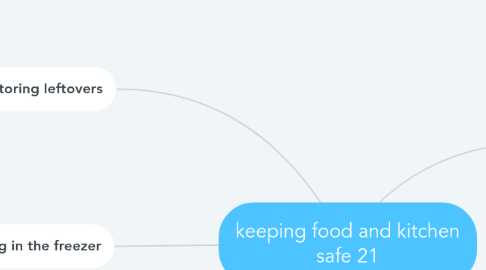keeping food and kitchen safe 21
by Nathan Creiglow

1. storing leftovers
1.1. to keep leftovers from spoiling, refrigerate or freeze them promptly,
1.2. or immediately after the meal. Put leftovers in a tightly covered shallow container,
1.3. freezing leftovers, pack them in an airtight container, and label them with the name of the food and the date.
2. storing in the freezer
2.1. You can keep packaged frozen foods, meat, poultry, fish, bread, and home- prepared mixed dishes
2.2. some food do not freeze well such as cooked egg white lettuce
3. storing in the fridge
3.1. A refrigerator keeps perishable foods fresh for one day to several weeks.
3.2. Even properly stored foods will not keep forever. Keep your refrigerator as cold as possible
3.3. freezing foods. Safe temperatures range from 320F to 400F (OOC to 40C). Inside shelves and drawers stay colder than door
4. ways to minimize and prevent food and kitchen contamination
4.1. always cook ground beef to minimize E.coli
4.2. thoroughly cook proteins to an internal temperature of 165 degrees to kill any harmful bacteria that may cause contamination
4.3. make sure you wash all dirty equipment ans surfaces in hot soapy water to disinfect and sanitize
5. handling food safely
5.1. Another way to reduce the risk of food poisoning is to handle perishable foods carefully.
5.2. Foods that are perishable are likely to spoil quickly.
5.3. yogurt should be kept cold until they are eaten.
6. storing in the pantry
6.1. Keep nonperishable foods in a cabinet or pantry.
6.2. includes grains such as rice, cereal, flour, and crackers. Oils, dry herbs, and unopened cans and jars


